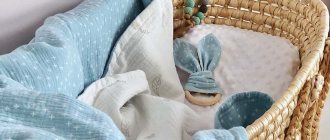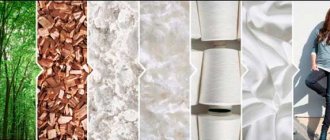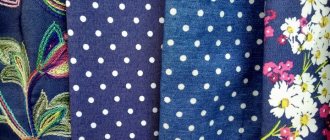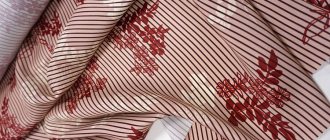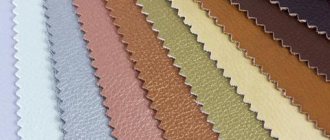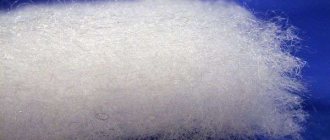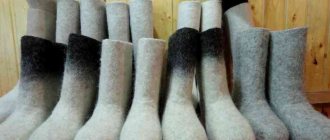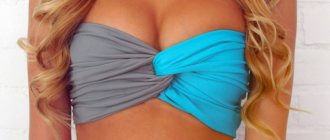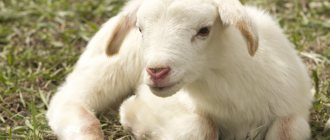Felt is a non-woven natural wool material. Felt owes its appearance to ancient cattle breeders, who noticed the unique ability of wool to felt under certain conditions. This knowledge was put into practice, with the result that canvases of different density and size were used for different purposes. Despite some loss of popularity in the 90s, over the past ten years there has been a trend towards an increase in demand for felt products. Modern designers are developing many models of clothing, shoes, and design elements. The material is no less in demand for technical needs. Like any material, felt has a number of features, advantages and disadvantages. To avoid disappointment, it is better to familiarize yourself with the main characteristics before purchasing products that are not cheap.
Description and composition
What is felt? From the Turkic language the name is translated as “blanket”. This is a dense non-woven material made from felted sheep wool. The best felt is made from the fine down of goats or rabbits. They are thinner and softer.
Appearance of felt
The material has a unique low thermal conductivity, but at the same time allows air to pass through well. Thanks to these features, felt makes excellent hats and warm shoes, and coverings for yurts are also made from it.
Made from animal wool, sheep is usually used. Thanks to the top scaly layer (cuticle), wool fibers can adhere to each other under the influence of steam and hot water. Felting is done according to this principle, resulting in separate felted pieces of material.
Important! In machine production, felt is produced in sheet rolls of the required thickness.
Yurt
Differences between felt and wool
Felt is a non-woven material, while wool fabric is created from natural fibers by weaving them, after which a fairly dense, compact material is obtained that retains heat well. Despite the common raw materials for manufacturing, wool is still inferior to felt products in its performance qualities, namely wear resistance, which is associated with the lower density of the material. At the same time, woolen fabric, like twill fabric, is characterized by better air permeability, as well as compactness (due to the absence of a large number of layers of wool fibers). Products made from this material are light, but at the same time very warm. Therefore, when choosing products, it is necessary to focus on the naturalness of their origin, as well as personal preferences. Find out about the medicinal properties of dog hair products here.
History of origin
For many of the nomadic tribes of Central Asia, this was the first material that they could obtain and use. It is believed that felt appeared in the 5th-6th millennium BC. BC, when domesticated dogs and horses helped increase sheep herds.
Important! Since wild sheep do not have a cuticle, felt could only be obtained from domesticated animals.
At first, the felt had the natural color of sheep skin; after some time, the material began to be colored using natural dyes:
- The green color was extracted from a mixture of walnut, nettle and mulberry leaves;
- Yellow - from onion peel;
- Gray - from bean broth;
- Brown - from a decoction of nut shells;
- Pink - from blue plum flowers and wild poppy flowers.
A flock of sheep
Later, by mixing dyes, other colors were obtained.
You might be interested in this Characteristics and features of satin fabric: products made from the material
At the same time, much attention was paid not only to the beauty and brightness of the shades, but also to their resistance to washing, precipitation and fading during use. Oak ash, copper sulfate, sauerkraut juice, and rusty nails were used to secure the flowers.
Making felt carpet
Ancient tribes used the material quite widely: they made headdresses from thin felt, and from thick felt they made armor, shoes, coverings for yurts and horses. The products were decorated with applique fabric, felt and leather, embroidery, and decorative stitches. It is noteworthy that small things were usually done by women, large ones by men.
There was no felt in Russia. The Slavs made semi-felt, a classic example of such fabric is cloth. However, felted headdresses were known to the peoples of the Volga and Urals regions; they were also produced by handicraft in Novgorod in the 14th century. Footwear (felt boots) appeared only in the middle of the 19th century, but peasants quickly appreciated its advantages.
Gray cloth
How is felt made?
Everyone has heard at least once what felt is, but few know what it is made from. The production process consists of several stages:
- Preparing wool. After the sheep are shorn, the wool needs to undergo a long process; it does not immediately become a pressed sheet. To begin with, it is sorted into different types. Since there are high-quality raw materials and second-class ones, which are suitable only for technical purposes.
- Combing. This is done by carding machines, which create lightweight material from clumps of wool.
- First stage of compaction.
- Final seal. Otherwise, this stage is called felling; this is done by felting machines.
- Coloring. This step is not always required, since some types of felt have a natural color.
- Drying and finishing. At this stage, it is regulated whether the manufactured material meets the requirements of GOST; it is given the desired shape and other parameters.
Properties and performance characteristics
Felt has certain characteristics and properties that are especially important for builders:
- Felt can be set on fire, but it does not burn, but smolders, since there is not enough oxygen for the wool to burn;
- It can absorb formaldehyde and absorb harmful substances that "stick" to sheep's wool;
- It can break down and absorb odors and toxins;
- Felt is the best natural heat insulator. Sheep wool has low thermal conductivity and does not protect against frost; the temperature is maintained by small air cavities, which are created by the wool fibers.
Important! Even if the felt absorbs moisture, it will retain all its properties and remain dry to the touch.
Felt insulation for construction
Why does the material compact?
Felt is made from natural wool due to long-term compaction of the fluff. The process is significantly accelerated if the material is pressed while wet. High density and tear resistance is obtained due to the special structure of wool fibers.
The felt flakes hold each other tightly with their edges. The entire process of fabric production consists of striving to hook the scales as tightly as possible. Felting is the most successful way to mix fluff particles. Wet material increases slip and the fibers enter the lock without much resistance, which cannot be separated without damaging the fabric.
Only felt has a scaly structure. The photo shows an example of the interlocking of the edges of the fibers - the cuticle. During the felting process, fluff is exposed to hot or cold steam.
Types and their differences
There are several types of felt. They differ in some characteristics and areas of application.
Felt is mainly divided into:
- Technical pure wool: in its production, pure raw materials are used, which are processed by “wet felting”. The density of such material is 0.15-0.39 grams per square meter. cm, thickness - 0.2-3 cm;
- Needle-punched or textile: based on composition, it is divided into wool, pure wool, wool blend and synthetic options. Density is 200-1600 grams per square meter. cm, thickness - 0.1-1 cm. Needle-punched felt can have up to 20 shades.
Color options
Types by composition
- Natural. Purified sheep or goat wool is used for production; cotton can also be added to increase the number of positive properties. It is used to make clothing and felt for handicrafts.
- Artificial. Polypropylene fibers are used to create it. You cannot wear such felt on your body; it is needed for technical purposes - house insulation, sound insulation, etc.
- Mixed. Otherwise it is also called thermofelt or thermoformed felt. This is a combination of natural and synthetic fibers that are combined into one material using heat treatment. The main application is mattresses, the layer between the springs and the filling. The thermal felt is dense and strong to prevent the springs from coming out of the mattress.
Application area
Depending on the type of material, it is used in the manufacture of:
- Clothes: coats, bags, hats;
- Shoes: felt boots and slippers, insoles;
- Toys and decorative items;
- Construction materials and furniture: filters, gaskets and substrates, soundproofing and roofing materials;
- Furniture, mattresses and cars;
- Polishing, wiping and processing materials, such as split wood;
- Saddlery products;
- Yurt.
You might be interested in Description and characteristics of calico: use of fabric in bed linen
Flaws
The many positive properties of felt material carefully hide its few shortcomings. But they still exist:
- Significant shrinkage.
- Absorption of large amounts of moisture due to the high level of hygroscopicity.
- Despite its antibacterial properties, felt is very attractive to moths.
Coat, bag, shoes:
Felt products
Already the first nomadic tribes used felt in a variety of areas. What is felt made of today? Its uses are also varied: clothing, furniture, jewelry, home textiles. Many people use the material as a hobby: sewing clothes or felting the fabric itself.
Felt for felt boots and house slippers
They are easy to sew yourself at home. It is necessary to choose fabric depending on the specific type of footwear: felt for felt boots should be thicker, for slippers - thinner. Products can be decorated with embroidery and appliqués.
Felt shoes
Application for tailoring
You can make various clothes from felt fabric: coats, vests, skirts, dresses, jackets. The material is especially popular for outerwear: coats, mittens, muffs. Felt clothing can be worn even in summer; winter versions are usually sewn with warm linings.
Felt outerwear
Decoration of felt products
To decorate felt products, you can use appliqués made of the same fabric or leather, embroidery, and decorative stitches. You can also use felt of different colors.
Decor example
Scope of application of felt fabric
Technical felt fabric, depending on the thickness or density, can be used for:
- construction - as a heat insulator for the walls and ceilings of buildings, insulation of window or door openings;
- arrangement of furnaces that are used in metallurgy, as well as in the ceramic or glass business;
- technical arrangement of boiler houses, for insulation of pipelines, chimneys, heat generators.
High-quality fine-wool felt is used in the manufacture of:
- Bedding - quilts, bedspreads, mattresses.
- Valenok. These shoes are gradually coming back into fashion. Designers offer both traditional and modernized felt boots, which can be decorated with embroidery, three-dimensional patterns, and decorative stones.
- Hat.
- Buroks, which are the national clothing of the people of the Caucasus.
- Bath accessories.
- Clothing - hats, coats, sweatshirts.
- Bags.
- Carpets, which are most often made in oriental style and can complement the corresponding interior.
How to make fabric at home?
Felt fabric is easy to make at home. For this you need the wool of a domestic animal: sheep, ram, rabbit, goat. It is best to use ready-made wool: it will be cleared of debris, combed, processed and dyed in the desired color. Otherwise, you will need to prepare it yourself.
You will also need:
- Bubble film;
- Roller or rolling pin;
- Warm soap solution;
- Napkins.
The manufacturing process at home
The felting process itself takes place in several steps:
- Cover your work area with film and make a concentrated soap solution from laundry soap;
- Place a layer of wool felt on the table, moisten it with water (it is better to use a spray bottle) and cover with bubble wrap;
- Press firmly on the film so that the water is distributed evenly, then roll over it;
- Remove the film, put on the second layer and wet it;
- Repeat until desired thickness is obtained;
- Remove excess water with napkins, trim uneven edges and dry the fabric.
Important! To avoid mistakes and understand the intricacies of the process, you should watch the training video in advance.
You might be interested in Description of calico: choosing the best density in bed linen
Industrial use
Low quality material or synthetic felt is used for various purposes. It turns out to be especially durable, with low thermal conductivity. This allows it to be used for insulating building facades. During construction, sheets of such material are laid under plaster for sound insulation, under linoleum.
In mechanical engineering, synthetic material is used as gaskets and oil seals. Thin fabric is widely used in electrical engineering as a dielectric. Another material is involved in the manufacture of saddles.
The engine compartment of cars is covered with technical felt for sound insulation and heat retention in cold weather. It is also placed on the floor in the cabin and trunk. For similar purposes, it is used to upholster the walls of trailers for shift workers to live in in the North.
Fabric care
In order for felt products to last longer, it is necessary to properly care for them. The basic principles are as follows:
- It is best to use dry cleaning, vacuuming;
- It is best to wash by hand, after brushing with a dry brush or soaking in cold water;
- You need to squeeze it carefully, squeeze it out lightly (you can blot it with a towel), without twisting or stretching;
- You need to dry your shoes or hats on a special dryer, and dry your bags and backpacks by stuffing them with newspapers or bags. This is necessary to maintain the shape of the product;
- It is better to store things in cotton bags or paper bags, treated with moth repellent. Bulk items can be stuffed with something to maintain their shape.
Varieties
As strange as it may sound, felt fabric is diverse. Technologists distinguish 8 main types of material. More details about them are written in the table.
| type of fabric | type of raw material | What is it for? |
| Felt | Natural. Rabbit and goat fluff is used for felting. | Sewing outerwear, winter shoes, hats and bags. |
| Yurt | A rare variety of natural felt. | It has long been used by nomads to build yurts. |
| Underlay or backing | 100% synthetic. | This is the inner surface of insulated floor coverings, often linoleum. |
| Podkhomutovy | Natural or semi-synthetic. | Necessary for the manufacture of saddles and clamps in equestrian sports. |
| Building | 100% synthetic or semi-synthetic. | Used for wall insulation and sound insulation |
| Technical or rough-haired | 100% synthetic. | Needed for technical work. The material is used to make gaskets, seals, and filters. |
| Needlepunched | Natural or semi-synthetic. | It is in demand in furniture production as a filler for sofas, armchairs, and chairs. |
| Plantar or shoe | Natural or semi-synthetic. | Indispensable for sewing winter shoes and insoles. |
